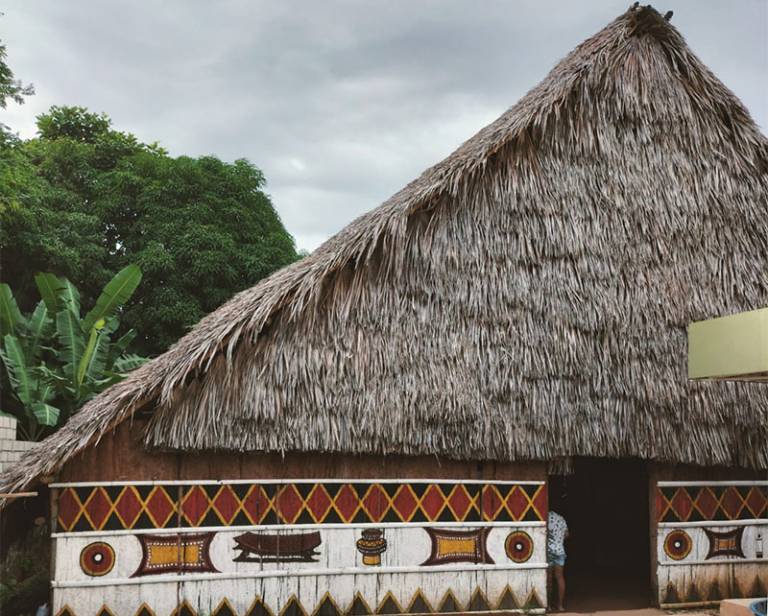This project focuses on heritage making as a practice of knowledge production in the northwest Amazon region, specifically the Negro River indigenous area.

The Negro River indigenous area is a semi-autonomous territory of the Brazilian Amazon inhabited by different Amerindian groups speaking languages of the Arawak, Tukano and Nadawhup families. The social memories and origin myths of these groups encode important information about the deeper human history of the region: memories generally detail events of displacement of centennial time-depth whilst origin myths identify specific locales in the landscape where powerful ancestors 'evolved' and shaped the world as is known. These narratives also mention the first use of crops, the history of landscape domestication, and past ownership of powerful objects (including ethnographic ritual paraphernalia now held in museums) before the arrival of ‘white people’. That many of these accounts refer to past events is illustrated by the single archaeological study that has been completed in the region, which confirmed oral histories about internecine pre-colonial warfare through excavations of a 12th century AD fortified settlement.
This interdisciplinary project, which is part of the Intercultural Archaeological Programme of the Northwest Amazon (PARINÃ) led by Manuel Arroyo-Kalin and other project partners, channels archaeological, anthropological, and historical approaches to reconstruct Indigenous History in the Northwest Amazon, a region that is well-known ethnographically as the home of a vast multi-ethnic and multi-linguistic indigenous population. The main project focus is the town of São Gabriel da Cachoeira (Amazonas state, Brazil), which is an historical cross-roads of indigenous groups that inhabit the broader transnational territory of the upper Negro River. Oral histories of many of these groups narrate the creation of the world and the emergence and/or immigration of their ancestors in times past, embedding indigenous history into this vast rainforest landscape that, criss-crossed with extensive rivers, has been shaped by different colonial processes since at least the 17th century AD. Its pre-colonial history is likely to push back to the early Holocene and some evidence records occupation starting in the 1st millennium BC.
A paucity of recent systematic archaeological research in the overall region, however, coupled with local indigenous conceptions of history that are fundamentally different from those produced by academically-trained researchers, pose significant challenges to the project team's ability to relate indigenous narratives and conceptions to the time-deep historical processes ascertained by historical enquiry. Bridges need to be built between these potentially polarised accounts if our disciplinary commitments to reconstructing the history of indigenous inhabitants is to engage the cosmological understandings of the very peoples whose ancestors being investigated.
This project, therefore, aims to devise substantive linkages between archaeological evidence, archival sources, ethnographic insights, and indigenous conceptions of the past, the latter anchored in ethnically-specific narratives that consider the landscape as both constituted and inhabited by powerful world-making forces. To this end, the project team strives to develop intercultural research activity involving connoiseurs, researchers, and students of indigenous background, focusing on multiple convergent lines of Heritage Making activity.
The project promotes capacity building, participatory research, and discussion of heritage policy by documenting the antiquity and characteristics of indigenous occupations in the NW Amazon region, in turn affirming Indigenous Historical and Cultural Heritage as relevant to ongoing indigenous efforts in favour of self-determination and cultural valorisation
Related outputs
Project exhibition
The Heritage Exhibition that showcases the findings of the project has been inaugurated in February 2023 in the Knowledge Longhouse of the Negro River Federation of Indigenous Organisations (FOIRN), São Gabriel da Cachoeira, a highly significant indigenous political association in the NW Amazon. Over multiple decades of political activism FOIRN has been key to the demarcation of the largest tract of untouched rainforest in Brazil, an indigenous territory inhabited by more than 25 different ethnic groups speaking different indigenous languages. Archaeological artefacts that have been recently excavated by our project in the region are being displayed - effectively engaging descendant local communities in learning about the insights derived from archaeological research.
Project workshops and excavations
The project team have undertaken archaeological excavations at two locales in São Gabriel da Cachoeira, systematised decades of ethnographic data collected by Instituto Socioambiental, and developed intercultural workshops discussing Heritage Making with indigenous connoisseurs.
Funding
Image: Casa do Saber/Maloca da FOIRN - photo: M. Arroyo-Kalin. The Exhibition "Memórias das Paisagens Ancestrais" took place here between 13-19 February 2023, in partnership with the Federation of Indigenous organisation of the Negro River (FOIRN), curated by Museu da Amazônia (MUSA).
 Close
Close

